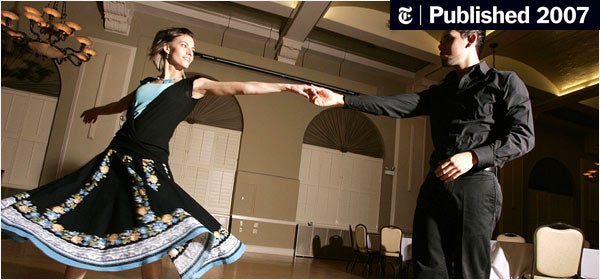Lifelong Learning – The New York Times

At a strip mall in Joliet, an hour’s drive southwest of Chicago, 19-year-old Stacey Jurgens spends long days on her feet styling hair. One evening a week, she escapes to the cavernous, faded banquet hall of an old hotel, now part of Joliet Junior College. “I love Latin music, the beats and the rhythm,” she said. “Dancing to the music sets me free.”
Her classmates, none as accomplished on the dance floor as she, include a 51-year-old store manager whose wife drags him there and a construction company manager and his girlfriend, who wanted to try something new. “Salsa Dancing” meets six times and costs $74.
This is Ms. Jurgens’s fourth evening class. “I took a beginner salsa class with my dad,” she said, “and that was so much fun I signed up for ‘Hip-Hop Dancing’ and ‘Advanced Salsa.’ ” Ms. Jurgens is participating in what community college catalogs call continuing education or, in the latest jargon, lifelong learning. At Cuyahoga Community College, in Cleveland, students play simulated versions of classic game shows in “Game Show Fun” or learn to “connect” in “Conversations That Matter.” One flight down from the dance class in Joliet, six women attempt to master the art of decorating cookies; a few doors away a chef teaches other adult students how to make hors d’oeuvres.
Critics say such courses divert institutional energy and attention away from the college’s essential missions. “If the community wants adult education, most community colleges say, ‘We’ll do that.’ If the community wants cooking courses, they say, ‘We’ll do that,’ ” says Michael W. Kirst, an emeritus professor of education at Stanford and director of the Bridge Project, a nonprofit organization seeking to get more low-income and minority students to college. “Before long they get to the point where they now do almost anything and everything a community wants, but none of it very well.”
What he calls “mission creep,” Kay McClenney, of the Community College Survey of Student Engagement, calls “comprehensive mission.” Continuing ed can be a profit center that supports items shortchanged in public financing, like the library or gym. It’s good community politics, too, she says. “Therefore, you will find community colleges operating wineries and golf courses and doing a whole lot of contractual training for employers,” she says. “They end up offering wine-tasting classes and charging a boatload of money for them.”
Thom Price, dean of community and economic development at Joliet, says that the most profitable noncredit offerings are not personal development like “Salsa Dancing” but professional development, the work force training requested by local businesses.
Ms. McClenney could be thinking of City College of San Francisco’s one-day wine workshops, including “France and Italy vs. California” ($40) and “Basics for Beginners” ($40). Noncredit continuing education contributes more than $350,000 to City’s budget each year, says Robert Gabriner, its vice chancellor.
Wine tasting makes sense in a wine region, and Excel class makes sense anywhere. But Ms. McClenney draws the line at “Great Ghost Stories” and “Game Show Fun.” “There are places where you have to exercise judgment. We shouldn’t offer classes in ‘How to Bet on Horse Races,’ but I know a community college that did.”
Stacey Jurgens has found a community at her dance classes. “They just bring people together, and they’re a great way to meet new people,” she said. Did she mean a boyfriend? “Probably,” she said, laughing. “But not as good as church. I have a boyfriend, a musician who loves to dance, and I met him at church.”
After graduating from high school, Ms. Jurgens went to commercial beauty school. Inspired by her mother, who is now attending Joliet full time to become an X-ray technician, Ms. Jurgens enrolled in an evening class in entrepreneurship. “It’s opened my eyes to the kind of things I could do.”
She could see herself, now, for example, opening a hair salon.
Read More
